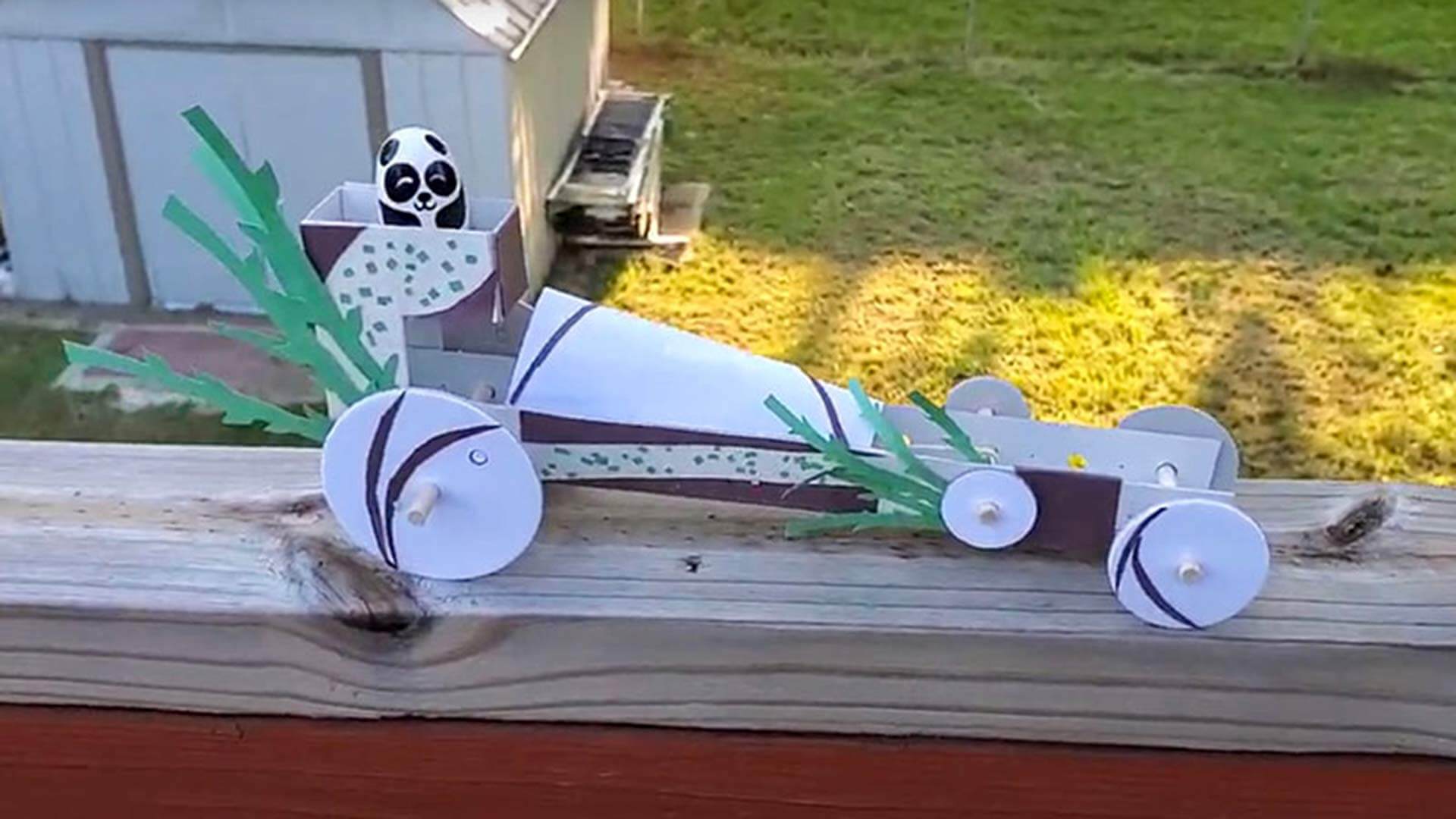- October 26, 2020
- By Aadit Tambe M. Jour ’22
An initiative by the University of Maryland’s Women in Engineering Program is expanding STEM virtual learning from schoolchildren’s computer and tablet screens to their garages, basements or backyards.
Staff members in the program will distribute 750 kits this week, with materials and instructions to build rubber band-powered cars for middle and high schoolers in Montgomery County, after doing the same for 750 Prince George’s County students in August.
 The easy-to-assemble car project draws inspiration from basic engineering design, and engages students in hands-on, practical learning at a time when the pandemic has made laboratory-type experiences difficult to arrange. The kits, which include dowel rods, cardboard, rubber bands and glue encourage students to experiment and explore math and physics concepts such as distance, time, speed and mass—and how these factors work together.
The easy-to-assemble car project draws inspiration from basic engineering design, and engages students in hands-on, practical learning at a time when the pandemic has made laboratory-type experiences difficult to arrange. The kits, which include dowel rods, cardboard, rubber bands and glue encourage students to experiment and explore math and physics concepts such as distance, time, speed and mass—and how these factors work together.
“These challenges really supplement their academic curriculum and allow students to test and experiment on their designs,” said Rebecca Kenemuth, assistant director for outreach and recruitment, for the WIE program in the A. James Clark School of Engineering. “What happens when you add weight to the car? How does that impact the speed? How does turning the wheels three or four times impact the distance?”
The pandemic had forced the WIE program to cancel its popular summer camps for girls that emphasize hands-on learning in STEM fields, and organizers wanted to find another way to put engineering into the hands of teenagers. WIE raised $13,000 from corporate sponsorships and grants to support their new idea to buy building kits.
Meanwhile, Vince Nguyen, a senior lecturer in mechanical engineering, created manuals to help high-school instructors integrate the kits in their academic curricula through experiments and challenges.
“We really pivoted quickly about what to do under the current circumstance to get engineering in the hands of students—especially right now—when they have limited hands-on opportunities with virtual learning,” Kenemuth said.
The program is working with schools in both counties that have the greatest numbers of students from demographic groups underrepresented in the field of engineering—including girls and students of color—and comes complete with instructions in Spanish as well as English. It started with STEM-interested Prince George’s County ninth graders and will now be offered to sixth graders in four middle schools in Montgomery County.
According to Angela McLane, career programs coordinator for Montgomery County Public Schools, the kits can get the student moving and “get them more interested and engaged in engineering—particularly kids who don't have as much access to engineering instruction.”
Topics
Campus & Community